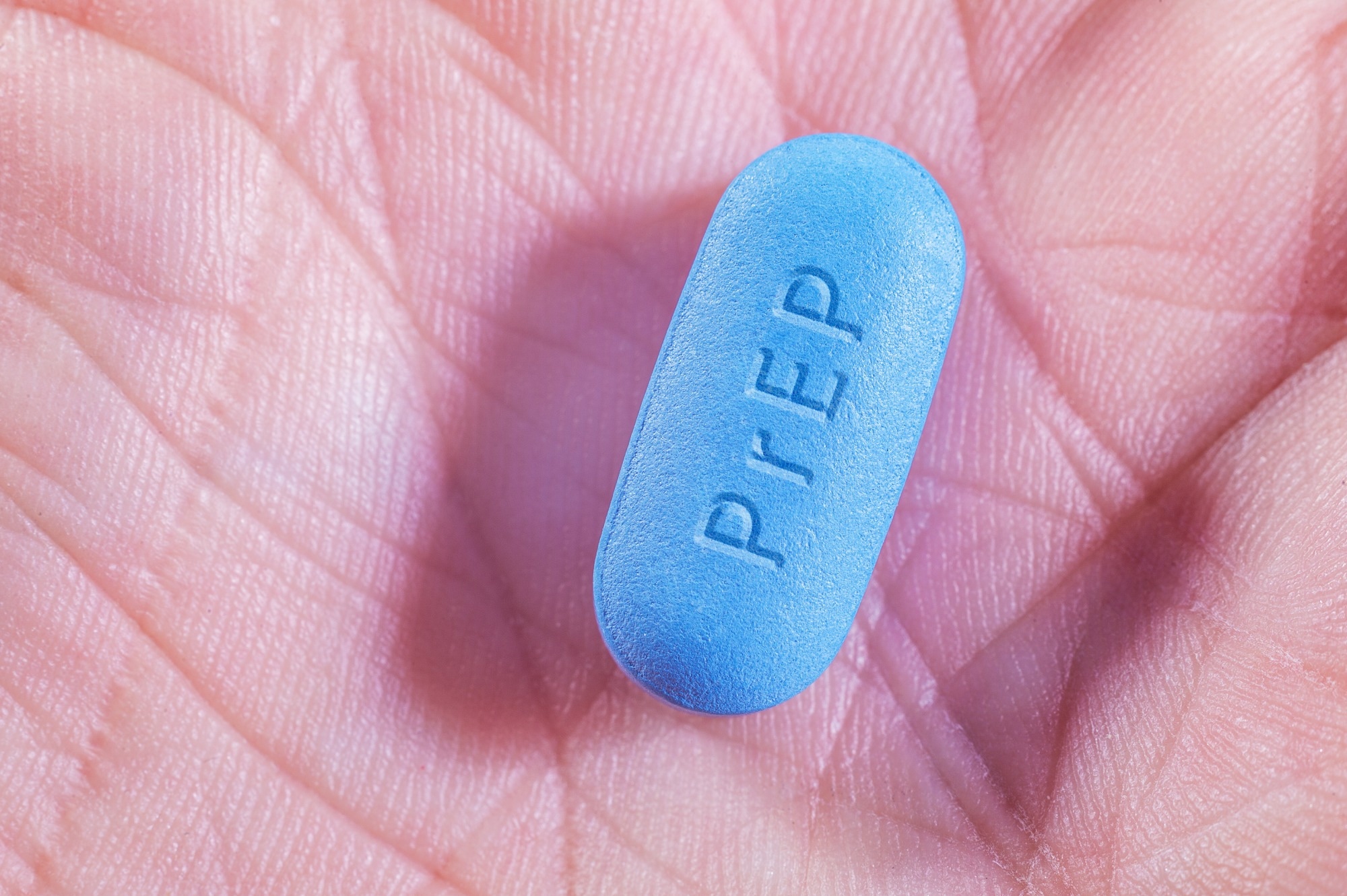In a recent study published in The Lancet HIV, researchers investigated the human immunodeficiency virus (HIV) pre-exposure prophylaxis (PrEP) requirement, duration, uptake, and usage among sexual health services (SHS) attendees in England.
 Study: HIV pre-exposure prophylaxis and its implementation in the PrEP Impact Trial in England: a pragmatic health technology assessment. Image Credit: Marc Bruxelle/Shutterstock.com
Study: HIV pre-exposure prophylaxis and its implementation in the PrEP Impact Trial in England: a pragmatic health technology assessment. Image Credit: Marc Bruxelle/Shutterstock.com
Background
From 2014 to 2021, England has seen a significant reduction in HIV infection incidence, with gay, bisexual, and males who have sexual intercourse with males (MSM) experiencing a significant decrease in disease incidence.
Oral tenofovir with emtricitabine for HIV PrEP has been effective in HIV infection prevention; however, data on PrEP duration, uptake, and usage is required for regular commissioning in England.
About the study
In the present study, researchers assessed HIV PrEP requirements, duration, uptake, and usage among individuals attending sexual health clinics in England.
The Impact study was a single-arm, open-label, prospective, multicentric trial conducted across 157 sexual clinics in England from 13 October 2017 to 12 July 2020.
Health professionals evaluated HIV-negative participants' risk of human immunodeficiency virus infection to determine who was eligible to take part in receiving everyday or event-driven oral pre-exposure prophylaxis with tenofovir disoproxil maleate plus emtricitabine, as needed.
The study included sexual health clinic attendees aged ≥16 years who were HIV-negative. Participants were divided into three groups: HIV-negative males and transgender women who had condomless sexual intercourse with males in the previous three months; HIV-negative partners who had sexual intercourse with a HIV-positive individual without antiretroviral treatment (ART) and adequate immunosuppression; and HIV-negative individuals at equal risk of HIV infection.
The team excluded individuals with HIV seroconversion symptoms, contraindications to the PrEP regimen, HIV-positive individuals within six weeks of enrollment, and those without PrEP prescription records.
Non-trial participants were HIV-negative, aged ≥16 years, visited sexual health clinics once or more after recruitment began and before 29 February 2020, and were not enrolled at any time point. The primary outcome included PrEP requirements, uptake, usage, and HIV/STI incidence among PrEP users in England.
Secondary objectives included determining whether new-onset HIV infections were due to non-adherence or biological failure of PrEP, measuring changes in STI and HIV infection diagnoses and incidence rates over time, and describing PrEP requirement, uptake, and duration of use across different clinic throughput strata and regions.
The team obtained non-trial attendee data from the Genitourinary Medicine Clinic Activity Dataset (GUMCAD). Specific data obtained during clinical consultations was reported based on the United Kingdom Health Security Agency (UK HSA) guidelines.
The researchers tested for HIV, STIs, hepatitis B virus (HBV) and C virus (HCV) infections, and serological creatinine levels every three months. Data were presented until 29 February 2020 before implementing coronavirus disease 2019 (COVID-19) mitigation measures. Multivariate regression models were used for analysis.
Results
The team included 21,356 (out of 24,268) individuals enrolled before 29 February 2020, of whom 20,403 (96%) were MSM. They excluded ten individuals who were HIV-positive within six weeks of enrolment and 54 without PrEP receipt records during the study period.
The median participant age at enrolment was 33 years; 16,111 (75%) participants were white. PrEP coverage among MSM at increased risk of HIV infection was 22%, with the lowest coverage among those aged 16-19 years.
Women and other populations taking PrEP denoted 45% of the 2,111 participants. PrEP uptake among clinically screened and eligible sexual health service attendees was 57% (n=21,292). PrEP coverage among MSM at increased risk of HIV infection was 20,349 out of 94,279 (22%).
Coverage was lowest among MSM individuals aged 16 to 19 [476 of 4,219 (11%)]. Among women and other populations, 939 (45%) of 2,111 took up PrEP. Among the participants, 18,499 had one or more post-enrolment visits and a 361-day follow-up (median).
Seventy-six percent of participants had adequate PrEP to protect them through three-quarters of the follow-up duration. The median percentage of follow-up spent at risk was 91% for all MSM individuals and 92% for those in a period of risk during follow-up.
The incidence of HIV infection was 0.1 per 100 individual years among MSM participants and 1.0 per 100 individual years among non-trial participants. Among MSM participants, 24% received diagnoses of at least two sexually transmitted infections, representing 80% of the 18,607 cases diagnosed.
STI incidence in MSM non-trial participants was 25 per 100 individual years, with lower rates among those aged ≥40 years, Europeans, black Africans, mixed ethnicity individuals, London residents, and those in socioeconomically deprived locations.
A total of 320,120 STI tests were documented, and 24,467 diagnoses were recorded. The risk of STI was 1.7-fold higher among trial participants compared to non-trial attendees. The overall MSM SHS attendee need for PrEP was 100,800, including 20,349 participants, 73,541 non-trial attendees at risk of HIV infection, 587 non-trial attendees who seroconverted, and 6,323 attendees sourcing PrEP elsewhere.
Conclusion
Overall, the study findings highlighted a significant unmet requirement for PrEP in England, including MSM individuals, and that the requirement for protection was persistent throughout the trial. PrEP is highly effective, with rare HIV infections and a high STI incidence.
However, PrEP needs were higher than expected, and a significant percentage of follow-up time covered by PrEP showed a continuing need for protection.
This study could inform routine commissioning and delivery of pre-exposure prophylaxis in England since October 2020, a crucial step towards eliminating HIV transmission.